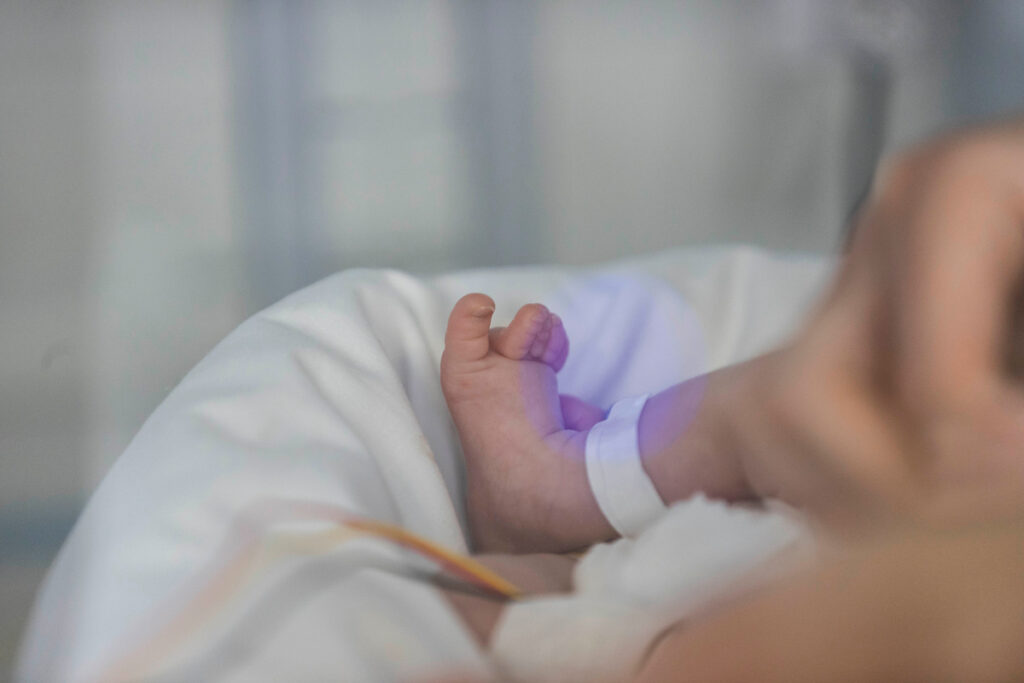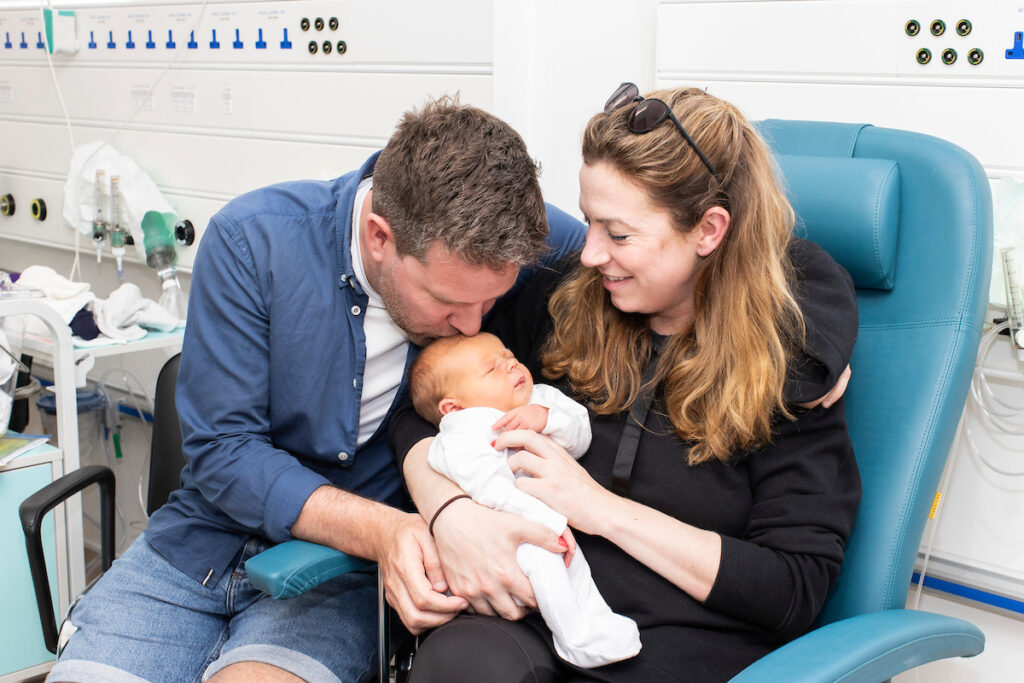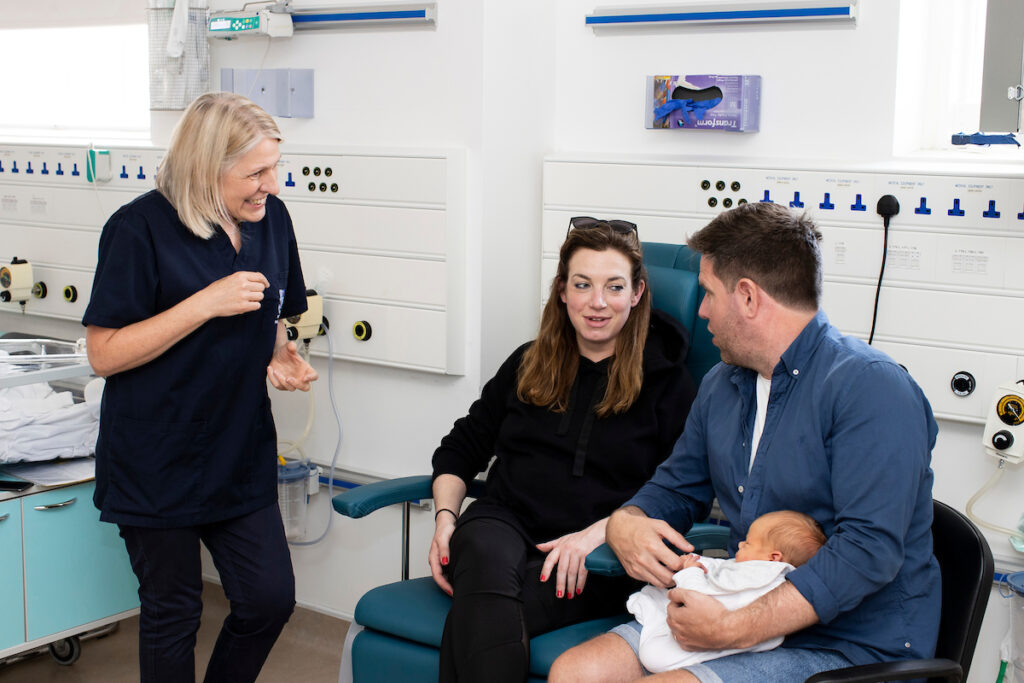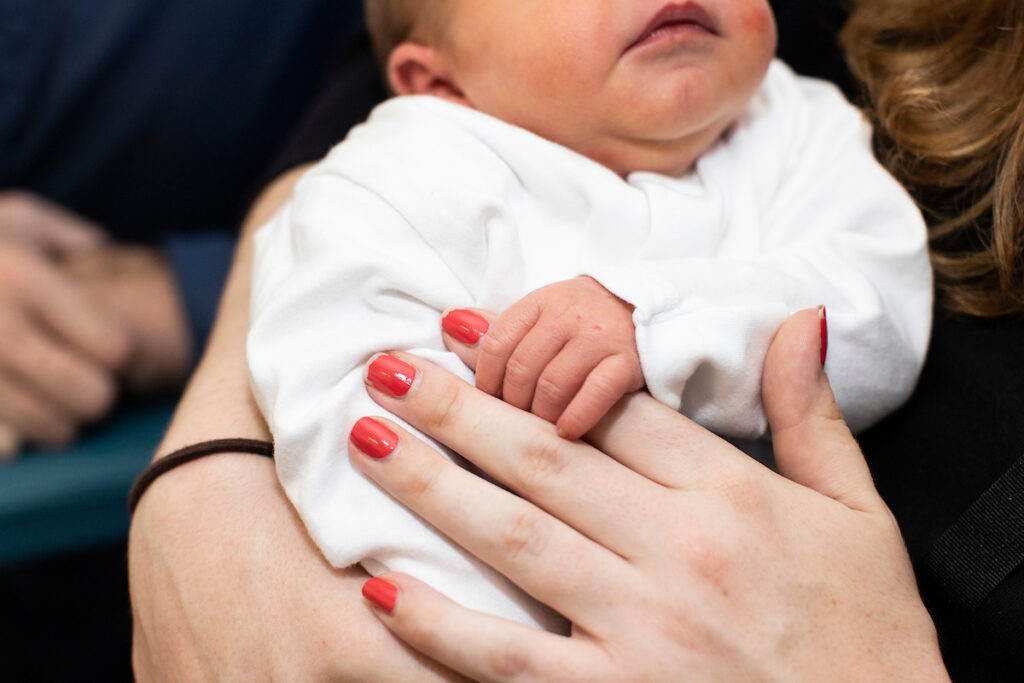Going Home - Recognising if your baby is unwell
Common issues
- It is very common for the belly button to stick out. This is harmless and will disappear in a matter of months.
- If the skin around your baby’s belly button is red, ask the PHN or GP to examine it. Some belly buttons can get sticky and smelly and should be checked by the PHN or GP, but this is rarely something worrying.
- Your baby is as likely to get a cold as any other baby is.
- Colds in babies usually present with a runny nose and a cough.
- If your baby is working hard at breathing, breathing fast or not feeding well you should bring your baby to be checked by a nurse or doctor. If your baby is more sleepy than normal you should bring them to be checked by a nurse or doctor.
Excessive crying that is difficult to console in a baby who is otherwise healthy, is sometimes referred to as colic. Some babies have particular crying episodes. At these times, babies may draw up their legs and go red in the face. This tends to be more bothersome for younger babies and generally resolves by approximately 3–4 months (corrected age). It is reassuring if your baby is otherwise well and thriving, with no vomiting or change in bowel habits.
There is no specific treatment for this and management generally involves comfort measures, see ‘Relaxation techniques for babies’ and ‘Suggestions to help if your baby cries’.
- If your baby does not settle or you are worried contact your baby’s PHN or GP.
Remember
If you have any concerns about your baby, seek medical advice from your PHN or GP. Further information/guidance Refer to www.mychild.ie
- If your baby has hard, dry and difficult to pass poos they may be constipated.
- Stool patterns vary. Some babies pass stools once or more each day, others may do so once every few days.
- What stools looks like can also vary. Babies fed breast milk tend to have softer looser stools; babies fed formula milk tend to have firmer more formed stools.
- It is normal for some babies to make straining noises when they pass a stool.
Sometimes stools change following a change in diet, supplements or medication, e.g. if your baby’s feeds change or when they start solid food. - If constipation is a problem, seek advice from your baby’s PHN or GP
See Suggestions to help if your baby is prone to constipation
- This is a scaly, greasy rash that develops on the scalp and eyebrows. It may also make a baby appear ‘spotty’.
- It is usually mild and responds to gently rubbing paraffin gel or emulsifying ointment onto the affected area and allowing it to soak in for a few hours. Then wash out with a soap substitute such as emulsifying ointment or Silcock’s base and gently rub the scale with a soft towel to loosen and help removal.
- Reflux or GOR happens in all babies. The valve at the top of the stomach is not strong when babies are born and reflux always happens. Some babies vomit with reflux.
- This is not harmful and most babies grow out of it over time as they get bigger and stronger.
- If your baby is well and growing normally, there is generally no need for concern.
- If your baby is growing well there is no benefit to using medications to stop acid because they do not stop the milk coming up out of your baby’s tummy.
See Suggestions to help if your baby is prone to GOR / Reflux
- This is very uncommon. This is reflux that causes problems with your baby’s growth or feeding.
- If you are concerned that your baby has GORD they should be seen by your PHN or doctor.
Hiccups are normal. See ‘Trapped air (wind)’ LINK.
Sneezing and snuffles are very common. Treatment is not needed unless it interferes with feeding.
Nappy rash can happen quite quickly. Use a barrier like Vaseline or something similar. If it does not get better quickly, contact your baby’s PHN or GP. See also ‘Thrush’ below.
Sticky eyes are a common problem. If your baby experiences sticky eyes, clean their eyes well. Use a separate piece of cotton wool for each eye and always clean from the inner to the outer part of the eye. If you need to repeat, use a fresh piece of cotton wool until the eye is clean. Do not reuse cotton wool even on the same eye. If your baby has redness in the white of their eyes or around their eye you should see the GP.
Thrush is an infection caused by a fungus called Candida. It presents as a white coating that can develop in various parts of the body including in your baby’s mouth. Thrush in the nappy area looks like a nappy rash with some extra spots of red. Thrush is treated with an anti-thrush cream, which needs to be prescribed by your baby’s GP or doctor.
Sometimes babies swallow air when they are feeding. This can sometimes make babies uncomfortable.
If your baby is prone to ‘trapped air (wind)’, help your baby to avoid swallowing air during feeds and to pass any trapped air they may have.
Suggestions to help your baby avoid swallowing air during feeds format as a Tips sheet
- Make sure your baby remains alert, calm and in an appropriate position during feeds (see ‘Positioning’ LINK).
- Make sure that your baby maintains a good latch (attachment) and seal around your nipple during breastfeeds.
Extra considerations for bottle-fed babies
- Ensure feeds are prepared correctly.
- Allow any air bubbles that may be in feeds to settle before feeding.
- Check that the teat and flow rate suit your baby.
- Check that your baby maintains a good seal around the teat and it remains full of milk and does not collapse during feeds.
See ‘Feeding time’ LINK for further guidance.
If your baby is unable to pass the air himself, the following suggestions may help them to pass it – up (burp) or down (flatulence).
Suggestions to help your baby to pass any trapped air they may have format as Tips sheet
- Hold your baby in an upright position on your lap or to your chest, with their chin on your shoulder and their back supported, and gently pat or rub their back until you hear the air pass. It is important to keep baby straight – sometimes slouching can mean that trapped air will not pass. It may help to do this both during and after feeds.
- It may also help to change your baby’s position by holding them over your shoulder or in a sitting position on your lap, then lay them on their back or tummy for a few minutes and repeat until you hear air pass.
- Avoid leaning your baby forward as this may put pressure on their tummy and cause further discomfort.
Remember
Your baby may bring up a little milk when passing wind, so keep a cloth handy.
Suggestions to help if your baby is prone to constipation
- Make sure your baby drinks enough fluids – this includes milk feeds.
- If your baby feeds formula milk, make sure it is made up like the instructions say.
- Try relaxation techniques to help relax your baby’s bowel, e.g. gently move your baby’s legs and lower body, baby massage or a warm bath. These can sometimes help your baby to relax and help them to poo. See ‘Relaxation techniques for babies’. Please note some techniques suit some babies but not others, so only try if it seems to help, stop if not.
- If your baby is taking solid foods, make sure that they have enough fibre. Fibre is in vegetables and fruits, including prunes, pears and apples; peas, beans, lentils and other pulses; as well as whole-wheat foods from about 6–8 months.
- Note high fibre diets including unprocessed bran and fibre-enriched foods are not recommended for babies. Ensure your baby drinks sufficient fluids (including milk feeds and drinks of cooled boiled water if thirsty) with fibre containing foods.
- Only use laxatives or other medications if advised by your baby’s doctor.
Relaxation techniques for babies
- Gentle movement of your baby’s legs and lower body
- Before doing so, wait at least 1 hour after feeds or until your baby’s tummy is not full.
- Lay your baby on their back, gently take hold of their legs and slowly bring their knees together towards their tummy until you feel slight resistance, then gently and slowly bring their legs back to the starting position. As your baby relaxes into the movement you may find there is less resistance.
- You may find your baby prefers you to do this one leg at a time – like a ‘cycling’ or ‘marching’ type movement.
- Repeat a few times. If your baby enjoys it, you can continue, but stop if your baby is not comfortable.
- Ensure that the movements are never vigorous and take care to never use force.
Baby massage
- Seek advice from a trained professional and ask about the appropriate tummy massage strokes that may help.
- Ask your Health Centre/Primary Care Centre for details of local baby massage classes that may be available.
- A warm bath
See also ‘Activities you can do as a parent to ‘Comfort’ your baby’.

Gently moving baby’s legs
Remember!
As your baby relaxes, they may pass air/wind or a stool/bowel motion so be prepared.
Suggestions to help if your baby is prone to GOR / Reflux
- Avoid pressure on your baby’s tummy – especially during and after feeds.
- Keep baby a little bit upright during their feeds ‘Positioning’.
- Do not let baby slouch after feeds, e.g. in a car seat or bouncer seat. It may help to hold your baby upright in your arms or in a sling after feeds.
- Avoid handling your baby too much after feeds.
- Avoid tight-fitting clothes that can press on your baby’s tummy.
- Make sure your baby isn’t getting too much feed when they are feeding. This mainly only happens in bottle-fed babies. Sometimes smaller feeds more often might help. If your baby cannot take the expected amount of feeds, let their PHN or doctor know.
- Help baby to avoid trapped air (wind), see ‘Trapped air (wind)’.
- Avoid exposure to tobacco smoke.
If your baby vomits large amounts of milk or experiences discomfort, or if their growth is slow, ask their PHN or GP to examine them and provide further guidance.

Dad supporting Mum and baby after a feed

Parents consulting with NMH dietitian
Suggestions to help your baby avoid swallowing air during feeds
- Make sure your baby remains alert, calm and in an appropriate position during feeds (see ‘Positioning’ LINK).
- Make sure that your baby maintains a good latch (attachment) and seal around your nipple during breastfeeds.
Extra considerations for bottle-fed babies
- Ensure feeds are prepared correctly.
- Allow any air bubbles that may be in feeds to settle before feeding.
- Check that the teat and flow rate suit your baby.
- Check that your baby maintains a good seal around the teat and it remains full of milk and does not collapse during feeds.
See ‘Feeding time’ for further guidance.
If your baby is unable to pass the air himself, the following suggestions may help them to pass it – up (burp) or down (flatulence).
Suggestions to help your baby to pass any trapped air they may have
- Hold your baby in an upright position on your lap or to your chest, with their chin on your shoulder and their back supported, and gently pat or rub their back until you hear the air pass. It is important to keep baby straight – sometimes slouching can mean that trapped air will not pass. It may help to do this both during and after feeds.
- It may also help to change your baby’s position by holding them over your shoulder or in a sitting position on your lap, then lay them on their back or tummy for a few minutes and repeat until you hear air pass.
- Avoid leaning your baby forward as this may put pressure on their tummy and cause further discomfort.

Mum supporting her baby after feed
Remember!
Your baby may bring up a little milk when passing wind, so keep a cloth handy.


